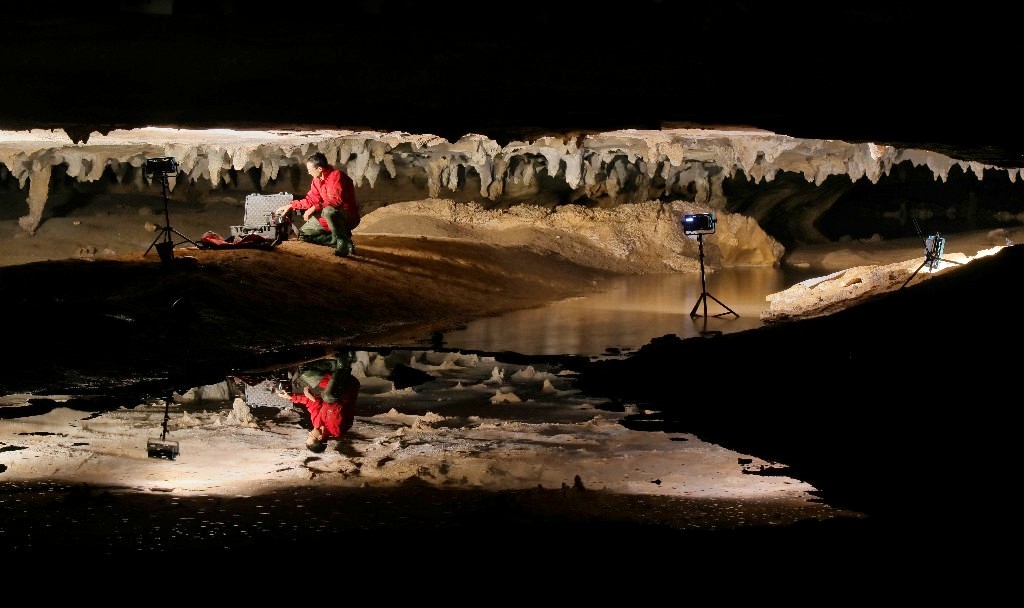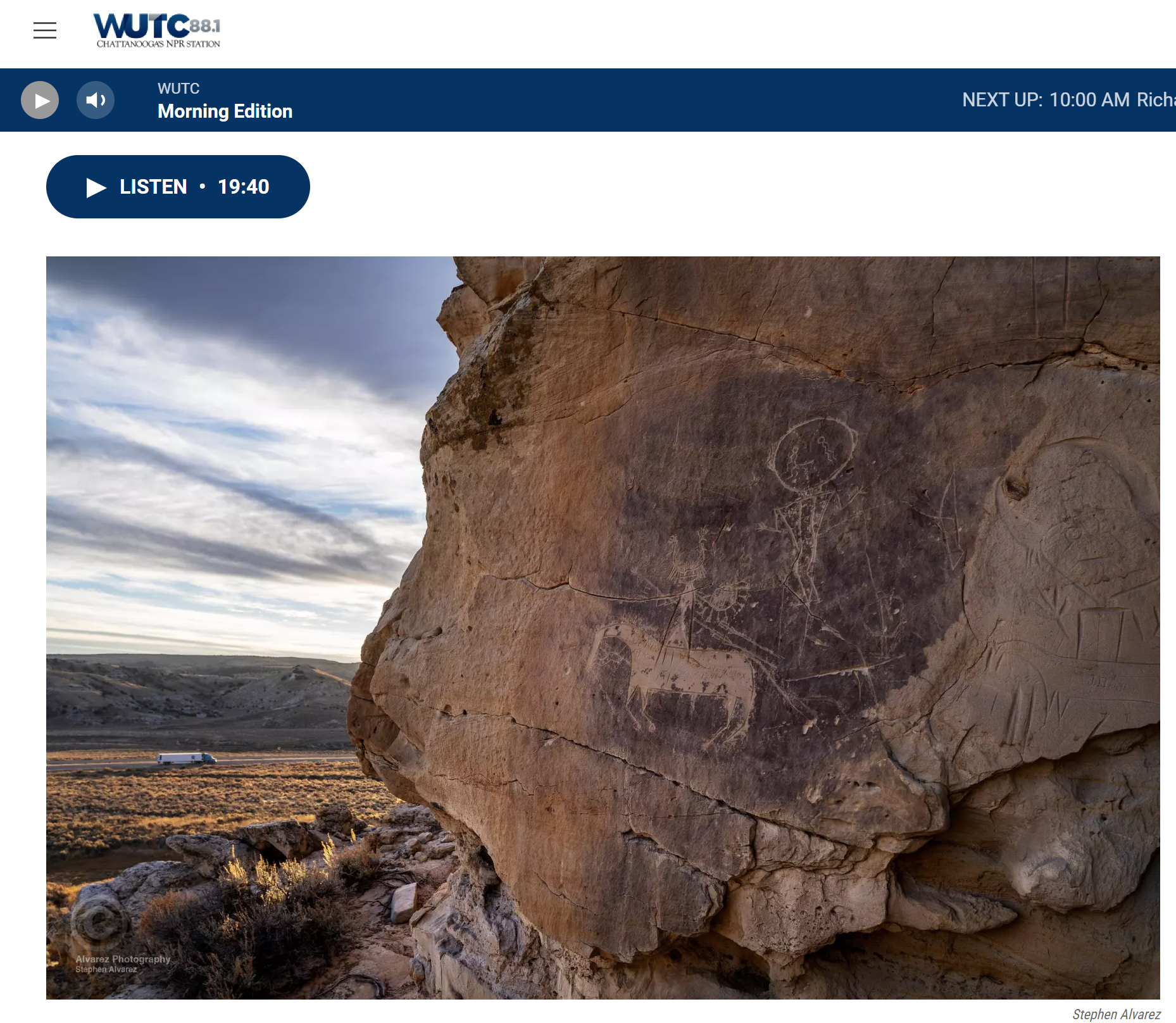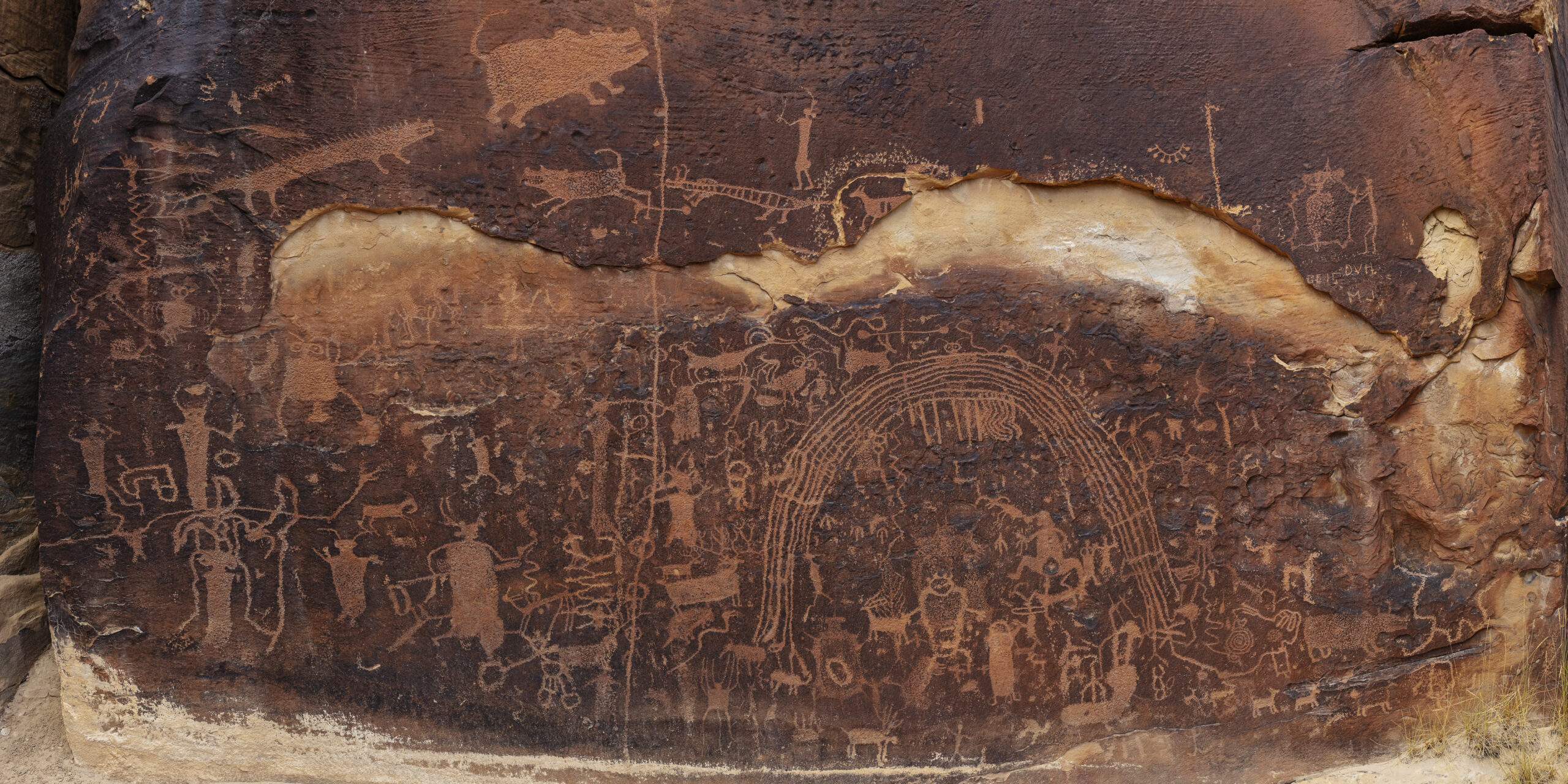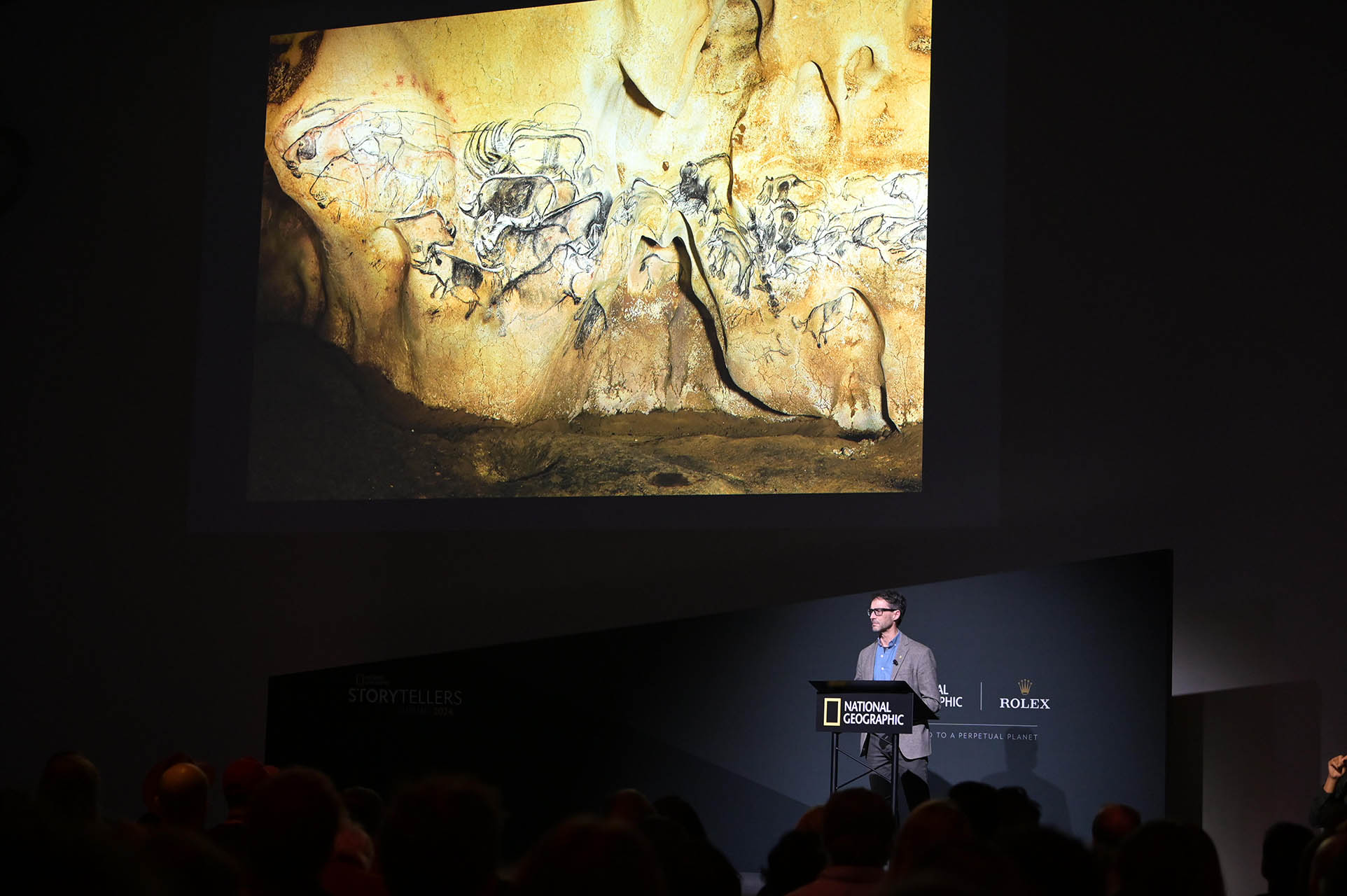Above, Stephen Alvarez works on building a 3D model of cave art in an unnamed cave in the American Southeast. Photo by Alan Cressler
The Ancient Art Archive and board member Dr. Jan Simek of the University of Tennessee used digital 3D modeling techniques to discover previously unknown, large-scale Indigenous cave art on the ceiling of a cave in the Southeastern United States.
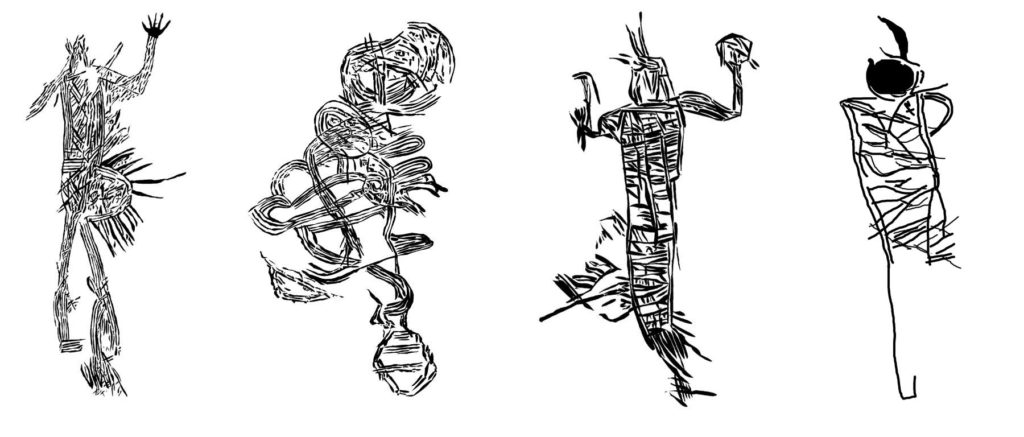
The Ancient Art Archive was able to accomplish the fine-scale 3D modeling that enabled this discovery thanks to a grant from the Lyndhurst Foundation.
Dr. Simek describes the significance of these previously unknown cave engravings.
We have not seen their like before, we do not know the identity of these ancient cave art anthropomorphs. They are not recognizable characters from ethnographically recorded South-east Native American stories, nor from archaeologically known iconographic materials.
Dr Jan Simek, Antiquity May, 2022
Mapping that cave ceiling was one of the Ancient Art Archive’s first projects, a proof-of-concept project designed to see if we could use a 3D mapping technique called photogrammetry to digitally “see” cave art—in this case faint mud glyphs—on the ceiling of a cave in the Southern United States. We knew the glyphs existed, but they were so faint it was impossible to make out the full images. At the Ancient Art Archive, we use photogrammetry to build VR experiences of cave and rock art sites around the world, but photogrammetry techniques had never been tested as a tool of discovery before our work in this cave.
We pushed the capabilities of photogrammetry to the limit in this project—and a little beyond. We had to build an entirely new computer to finish the project. Heat created by the processing power required to compile thousands of images melted the motherboard of our first machine.
The Southeastern United States has more than ten thousand caves. We’ve long known that indigenous cave explorers traveled miles underground. But the area isn’t well known for rock art, even though the Indigenous inhabitants of the Southeastern United States created it in abundance. However, the area is a poor preservation environment—abundant humidity and rainfall rapidly degrade most rock art. Woodland culture cave art requires special circumstances to survive—and a highly observant person to notice it.
Photographer and cave explorer Alan Cressler was the first modern person to detect artwork in the 19th Unnamed Cave (a random number assigned to protect the cave’s identity). He and Dr. Simek of the University of Tennessee described those mud glyphs in a 1999 paper (here). When Cressler noticed additional mud glyphs on the ceiling more than 15 years after that first publication, we launched our project in the 19th Unnamed Cave to see if 3D modeling could reveal additional mud glyphs.
The effort proved spectacularly successful. Photogrammetry revealed thousands of additional glyphs and images, most outside the canon of Native American iconography previously detected in the Southeastern United States. Moreover, the images are much larger than any previously known in the region. In size, they measure up to some of the larger pictographs and petroglyphs of the American West. They’re also the largest cave art images yet discovered in the Americas. Dr. Simek details those discoveries in a May 2022 paper in Antiquity.
This video derived from the Ancient Art Archive’s 3D model shows the artwork in the 19th Unnamed Cave and the entire expanse of the engraved ceiling. In the video, we’ve “traced” several images and overlaid them on the etchings to make the art more visible. Much work remains to be done—thousands of images on the cave ceiling have not yet been cataloged.
Using 3D modeling to reconstruct the cave allows us to not only discover previously unknown artwork, but to view the totality of the engravings on the ceiling in context as a single composition. And context is critical if we ever hope to unravel the image’s meaning. The images are thought to be Woodland Culture. We have at best a dim understanding of the Woodland worldview. Prior to this discovery, no life-sized Woodland anthropomorphic figures had ever been detected.
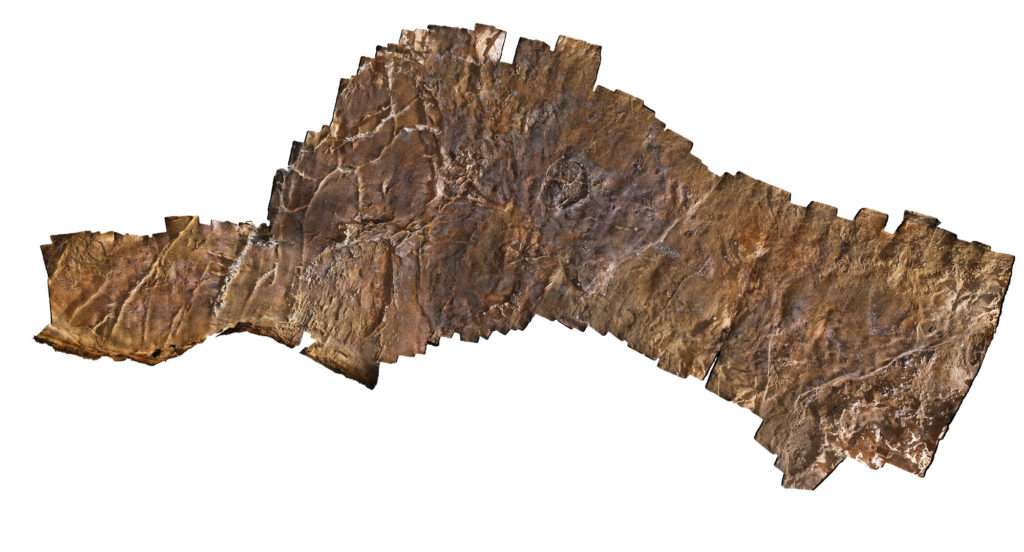
Building the 3D model required stitching together more than 16,000 overlapping photographs. Stephen Alvarez spent months crawling around on the cave floor taking all those photographs—and then months more in the Ancient Art Archive office building a detailed model of the cave.
Stephen chose photogrammetry over another 3D modeling technique called Lidar because of the harsh cave environment. He spent many days working above deep pools of water and didn’t want to risk destroying a $100,000 Lidar unit by accidentally dropping it into a pool.
All of Stephen’s hard labor created a precise map of the cave’s ceiling. The software allowed him to shine virtual “light” onto the ceiling from any angle, revealing the details of previously obscure artwork. The video below shows a virtual light rotating around one of the images on the cave ceiling. The end of the video superimposes a drawing of the figure. Notice how the image changes as the light moves and how many faint engravings are on the ceiling. Without the aid of 3D modeling, this figure is virtually invisible.
The time lapse video below will give you an idea of some of the labor that went into making the Ancient Art Archive’s 3D model of 19th Unnamed Cave.
The Ancient Art Archive’s 3D modeling and rendering skills have improved since we did our work in 19th Unnamed Cave. We’re now able to create images with much finer detail and deliver more realistic VR experiences. For example, check out what we’ve done in Devilstep Hollow Cave.
Resources:
A paper published in Antiquity details our discovery (HERE ).
See other Southeastern Dark Zone cave art
John Sullivan’s Paris Review story on dark zone cave art
Southeastern Cultural Complexes explained
Media Coverage of the discovery:
